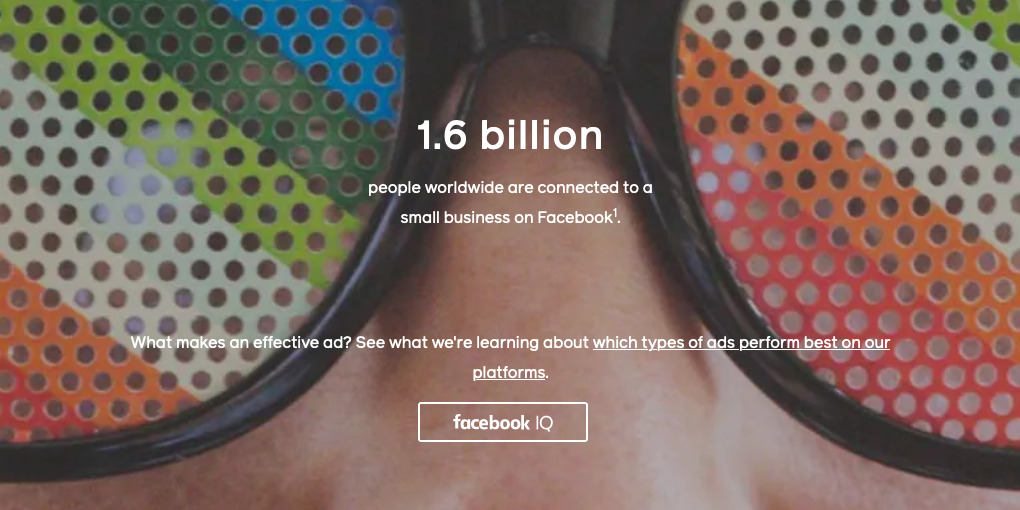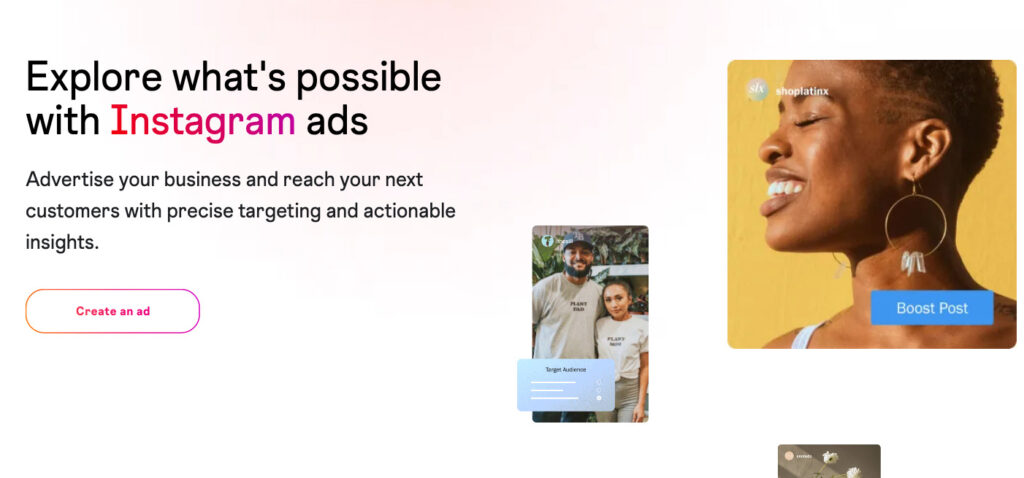Advertise Your Business Online: Tips and Tricks for Success

It would appear like a jungle out there when you begin to study all the feasible places to advertise your business online, but we’re here to lead you through this packed space. Regardless of how small your budget is or how you chose to distribute it, assigning some of your advertising to expand toward web-based promotion is an intelligent move.
Traffic driven into your website via a paid advertisement is 50% more possible to buy your product than those who approached from an organic link. That’s probably because, if done correctly, ads are intended for the exemplary audience for advertising online, and that audience is inclined to purchase.
With that objective in mind, let’s find the online platform that’s apt for your business.
1. Google

Google AdWords is easily the top online advertising option for companies of all shapes and sizes. As per Emarketer.com, Google catches more digital ad dollars than any other company in the nation.
Google’s industry supremacy makes sense, showing that “businesses get back double the amount spend on AdWords.” This is a huge payback on your investment! Though advertisements on Google becoming complicated, we’ll learn the basics to help you know their power tool.
Advertising Online by Google acts as two ad networks: search and display. We’ll study each in turn.
Google’s Search Network
This platform helps with online advertisements you notice above or below your organic search results when you enter a query into a search engine. They’re noticeable with the word “Ad” in a little green box, and you’ll probably identify them from the image below:
What you could not know is that Google determines which online advertisements to show you founded on a real-time auction process for the “keywords” that people be able to type in when they do a search.
Google grants a value to each keyword in the above picture, which turns from moment to moment, and found that value on how often the word in question is searched and how immense the competition might be at any given duration for that word or phrase.
In spite of the fact that you can take part in the keyword auction with a budget of all sizes, those who are ready to pay the most are expected to have their ads shown.
Your utmost budget for online advertisement, ahead with an algorithm Google uses called Ad Rank that measures how appropriate your ad is to the searcher’s query, will ultimately decide whether your advertisement makes the final lap.
To magnify your online advertisement spending, choose keywords that are related to your product, are frequently searched, and for which there is limited competition.
Choosing the keywords that are correct for you relies on your budget and the required result of your campaign, which we’ll study below. There are a lot of tools out there to guide you with keyword selection, but we suggest that you begin with the Keyword Planner given by Google itself.
Google’s Display Network
As you possibly know, Google works with a lot of websites and tools other than Google. com—Gmail, Maps, YouTube, and so on. The Display Network commands a similar auction to the Search Network.
In place of vying for online advertisement placements on Google.com, you’re battling for written or video ad space on sites belonging to Google other than Google.com, or on third-party sites that Google has partnered with through other companies Google also owns, like AdSense or DoubleClick.
Always search for a product on Google.com or go to a non-Google website only to see an online advertisement for the right product you searched for previously or from a similar webpage you previously visited—but this time, you’re on an entirely unconnected website, a third-party site? That’s Google’s Display Network in full force, using a form of marketing called retargeting—where marketers attempt to sell you articles found on your past online actions.
Even though the Display Network may touch far and wide, it’s not as effective as the Search Network because search is far more focused.
If you go to Google.com, you’re looking for particular information. If you’re given an ad by the Search Network that immediately relates to the information you seek, you’re more possible to click on it and join the business that placed the ad.
Match the above experience to when you view an online advertisement from the Display Network on an unconnected page while you’re operating in something else fully. That online advertisement may or may not hit your mind, and you may or may not have the time or desire to involve with it.
Although online advertisements on the Display Network are less costly, their lower CTR may affect fewer conversions—which is marketing speak for no matter what action you’d like your customer to take—whether that be to go to your website, fill out a contact form, call your business, etc.
This leads us to the final feature of advertising your business online with Google: the types of keyword bidding you select. Let’s study the three most common:
Cost per Click (CPC)
This indicates that you’ll pay just when someone really clicks on your online advertisement. This methodology is best if your goal is to grow visitors to your website.
This option means that you won’t overspend valuable advertising dollars if no one engages with your ad, CPC can be expensive. Recall that each of these is the price for one click:
Cost per Mille (CPM)
CPM tests the cost per one thousand impressions, or how much it will cost a bundle for 1,000 people to lay eyeballs on your ad. Google charges extra for this option, on the idea that the more customers who view your ad, the improve the business outcome. But this theory isn’t entirely certain.
Just because your online advertisement was delivered to 1,000 people, you can’t be certain that they really saw your online advertisement—or if they did, that it entered their brains. Consider how many things pass across your screen as you surf the internet to which you pay no mind.
Cost per Acquisition or Action (CPA)
Bear in mind when we discussed changes in the materials above. That’s what Google means when they refer to purchases—whatever action you, in the end, hope your customer will take, and nevertheless, you still pay per click in this bidding scenario, Google will enhance your campaigns to cause the maximum number of conversions at the CPA you give.
Customer acquisition is an objective of online advertising, but you’ll pay, therefore. If you have the opinion that other choices were expensive, hang on to them.
As you can think, such costs are above the budget of most small businesses. Fortunately, though, you can select the low-cost alternative of CPC, and you can strongly work to lessen CPC. When businesses advertise with Google, that’s the path most take.

2. Facebook

Even though Facebook may not have the full reach of Google, it’s a power station when it comes to targeted advertising. If you have a defined audience in mind, you can sharpen your Facebook ads with extreme accuracy—based on a restricted set of unique interests.
Facebook provides a variety of locations for your online advertisements: on the right side of the homepage; in the newsfeed on the user’s desktop or on the user’s mobile via short videos shown during Facebook Live; in Facebook Stories; in the Facebook Marketplace; and within the Facebook Messenger application.
Facebook uses a bidding model as well, only here your full ad is on the auction block. Like Google, your bids are founded on the daily budget you’ve given to Facebook. The difference is that, while Google assesses relevance, they support the huge spender.
Whether you’re an auction winner on Facebook relies more on the significance of your online advertisement to the user, as measured by Facebook’s Relevance Score, than on how much you’re ready to spend. This shows on Facebook’s highlight audience precision, above stated.
An average price per bid can give an advantage, as it permits Facebook to raise your bids in some specific auctions in order for you to win. Most bids are just that, and Facebook will not surpass them by not telling them otherwise. If you cater to your audience, Facebook is an intelligent choice for your advertising plan.
3. Instagram

Facebook took over Instagram in 2012, and since then, the working of the two platforms has converged. Online advertisements on Instagram can be seen in the user’s feed or inside their Stories, despite sponsored or branded content being far more famous on Instagram than on any different platform
Sponsored content is when an organization gives money to the Instagram influencer to post content that optimistically preaches about the brand.
An influencer is an individual with a lot of followers to who the company’s customers are loyal. Such posts are usual and Instagram creates a Branded Content Tool from them.
Branded content is quite prevalent on Instagram because the main chunk of Instagram users falls into two age categories: 18-24 and 25-34. Those two groups are categorized as millennials and post-millennials, who are known to disbelieve traditional advertising but are ready to listen when their favourite celebrities endorse a product in what they endorse to be fashion.
A traditional commercial is seen as false, but an Instagram post shows the influencer using the product to be worth the money.
Concluding….
As we know, where one chooses to advertise online relies on the goals and the budget for your campaign. Even though you’ll cover all your bases with Google, you might look at your cash doesn’t go very far. Every piece of money spent will be doubled when it comes to online advertising.



